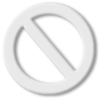We use cookies to improve and analyse your browsing experience on our web. You can accept these cookies, reject them or choose your settings by clicking on the corresponding buttons. Please note that rejecting cookies may affect your browsing experience. For more information you can consult our Cookies policy.
Cookies are an essential part of how our web works. The main goal of cookies is to make your browsing experience more comfortable and efficient and to improve our services and the web itself.
Here you can find all the information about the cookies we use and you can activate and/or deactivate them according to your preferences, except for those cookies that are strictly necessary for the operation of the web. Blocking some cookies may affect your experience on the web and how the site works. For more information you can visit our Cookie Policy.
These Cookies are necessary for the web to function and cannot be disabled on our systems. They are generally only set up in response to actions you may take such as requesting services, setting your privacy preferences, logging in or completing forms. You can set your browser to block or warn you about these cookies, but some parts of the web will not work. Information about Cookies.
These Cookies allow us to count the number of visits and traffic sources so that we can measure and improve the performance of our site. They help us to find out which pages are the most popular and least popular, and to see how visitors move around the web. All information collected by these Cookies is aggregated and therefore anonymous. If you do not allow these Cookies we will not know when you visited our web. Information about Cookies.
These cookies are used to analyse your activity in order to show you personalised advertisements. Information about Cookies.
Change theme

Revision mode

At the beginning of the 1960s, it was said that we knew more about the landscape of the Moon than the ocean floor. But during the Cold War, nuclear submarines needed accurate maps of the ocean floor. This led to the development of ocean floor maps.

Detailed maps of the ocean floor are created using sonar. Sonar sends out sound waves and measures the time it takes for the echo to return from an object. From this measurement, the distance of objects can be calculated in order to map the surface of the ocean floor. This map shows the main ocean floor landforms.

The use of sonar, deep sea drilling and the marine magnetometer has completely changed our vision of the ocean floor and our understanding of the dynamics of the Earth. Maps of the ocean floor show that there are many different landforms, from flat plains (abyssal plains) to large volcanic mountains. Notable landforms are the Mid-Ocean Ridge and ocean trenches.
Maps also show big differences between different oceans, especially between the Atlantic and the Pacific.
The Atlantic Ocean does not have many trenches, while the Pacific Ocean is almost completely surrounded by a large network of trenches. Some of these trenches are located along the continent; and some are located next to island arcs and inland seas.


Before our exploration of the oceans, some scientists believed that the oceans were huge bowls that filled up with sediment. However, areas were found with no sediment or with a very thin layer.
During the 1960s, several oceanographic expeditions, such as the DSDP (Deep Sea Drilling Project), took samples from the ocean floor that revealed new information:

The diagram below shows the differences between the oceanic and continental crust.

The diagram also shows that the continental crust is not only the areas of the continents above water; it also occupies the underwater shallow areas that surround them, such as the continental shelf.
Activity 25
Apply
Activity 26
Understand
Activity 27
Analyse
Activity 28
Create
Activity 29
Analyse
Activity 30
Analyse
Activity 31
Create
Activity 32
Create

